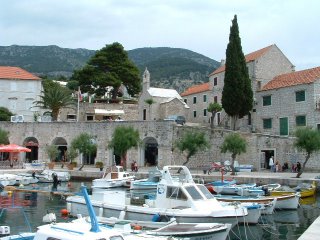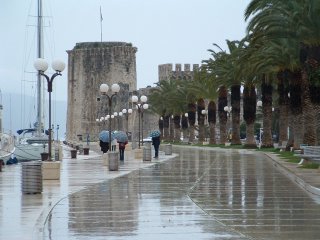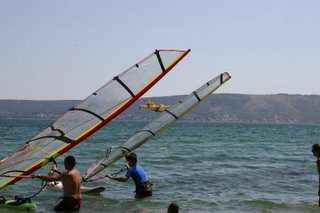Wednesday Column - Croatia Business 1: Overview of Sectors

The most important thing to bear in mind, when looking at any aspect of Croatian business, is the dominance of the state. The Government controls about 40% of the economy, a much higher percentage than Western Europe, and indeed many other South East European Countries. Croatia is endeavouring to tackle this problem, as well as its large balance of payments deficit, by selling off part, or all, of many state owned companies, but this process has had its problems and has stalled on a number of occasions. Many of the state owned businesses that have been privatised have been bought by foreign investors. The US plays a low key but strategic role advising on the privatisation process.
On the positive side, Croatia has a skilled, educated and reasonably cheap workforce that is under utilised. The official December 2005 unemployment rate was 18% and you will often find highly qualified teachers, doctors and vets, serving in cafes in the summer without complaint.
The remains of the bureaucratic communist system, and continuing state control in many areas, do not positively encourage entrepreneurship other than at a very low level, primarily in some parts of the tourism or catering industry. This leads to a supposition that only the very small and very large businesses survive. I hope this will prove to be a sweeping generalisation!
Statistics are available on many aspects of the Croatian economy but, in this first overview of business sectors, we will not give undue weight to them. This is partly because they can be confusing with inconsistent definitions, but mostly because the purpose of this article is to give the reader a feel for the nature of various sectors of the economy. At this stage, a better understanding can be gained by an appreciation of the background, relative significance and business culture rather than by pure numbers.
Tourism
This is a good example of an area where statistics may not help very much. Most families are involved in tourism in one way or another, either by letting spare rooms out, building new facilities, working in hotels, café’s and restaurants, providing recreation, services and goods, selling off spare produce, working in the numerous tourist offices, etc. Inevitably, whatever the business regime, this industry breeds a grey market and is difficult to define accurately. Tourism is so important to Croatia, and of so much interest to readers, that we have allocated this business sector a column of its own – See Tuesday Columns. (Monday's Column is dedicated to specific destinations). Suffice to say that the suggestion that tourism contributes 20% to Croatia’s GDP may well be wide of the mark. Government statistics focus on the number of “tourist nights” – 47.8 million in 2004. Do note however that nautical tourism is a very significant sub sector and one in which I have a special interest, so expect to see a fair number of postings on this subject in future Monday columns.
Agriculture
This is one area where the state has limited control or overt influence. If England was once described as a nation of shop keepers, Croatia could be dubbed a nation of small holders. The rocky soil is surprisingly fertile and every spare patch along the coast seems to be packed with one sort of crop or another. The markets and roadsides are full of fierce looking matriarchs selling their produce and there still seems to be enough left over for their families to be virtually self sufficient throughout the year. Again, it’s a reminder of Old England with so many traditional skills and the population’s natural resourcefulness evident in day to day activities – wine making, olive pressing, meat smoking, cheese making and dry stone wall building to name but a few. Croatians also seem to be expert at finding underground wells for irrigation.
Agriculture accounts for about 8% of Croatia’s GDP but it could be more and, again, there is a grey market. The fertile plains of the Neretva River, in the south, and Slavonia, in the north, are not fully utilised and we heard anecdotal evidence that the EU believes that Croatia could supply a large % of the communities needs if the resources were there to make it efficient. Whilst small holdings prosper, large farms are few and far between, partly because of the nature of the terrain, and do not have the sophisticated machinery enjoyed by their Western European counterparts.
Manufacturing
It’s hard to see, from some of the statistics, how the sectors are split. Looking at a range of sources, it would seem that “Manufacturing” consists of the industrial type (such as cement and steel), chemicals and chemical products, ship building, the food and drink industry (including canning and processing) and tobacco. That being the case, the group accounts for 20% of GDP with food, drink and chemicals taking 83% of that total. The industrial manufacturing base needs modernisation and investment but there are many local schemes evolving, eg in Sibenik, for providing investment incentives. The ship building industry is state owned and seems to be busy, with a lot of work coming from Finland and Sweden. It’s difficult to see just how profitable it is but it’s a fair bet that the state will continue to support it for a while to come. The food and drink industry is another success story with more than 10 of the Top 50 companies, by revenue, coming from this sector. Podravka dd is a national success story founded on the success of Vegeta – a yellow food flavouring/stock powder. Now a big influence in the food industry, it has also produced an English version of its cookery book which you can find at the “Bye Bye Shop” at Zagreb Airport, amongst other places.
Telecoms
As elsewhere in the world, the Telecoms industry is changing faster than anything else. One of the amazing things about Croatia, given the proximity of the mountains all along the coast, is the fact that you can get five bars on your mobile almost anywhere. Look a bit harder and you’ll see why - there are almost as many visible masts as there are ancient relics and monuments and, quite often, they’re next to each other! T-Com now operate the main landline and cell phone networks though competition is beginning to strengthen. Croatia seems to have caught onto mobile phones and phone shops as fast as any other country and the internet industry is beginning to catch up. ISDN is relatively recent but Broadband is beginning to roll out and home PC’s, though far less widespread than in the UK, are starting to be an essential for most households with teenage children.
Banking and Finance
Accounting for about 20% of GDP, competition is stiffening and most of the major banks are now owned, in part or in whole, by foreign investors. There are few controls on the flow of money for foreigners but exchange controls still exist for local companies. FINA, the state owned regulatory finance body that audits all companies books on a regular basis, needs plenty of paperwork for any payments overseas, especially for services. Most of the foreign investors are from Hungary and Austria. Surprisingly, Deutsche Bank does not seem to be overtly proactive and a phone call to HSBC a year ago suggested that Croatia was not yet part of the grand global plan.
Construction
The third of the “grey industries”, along with tourism and agriculture, in that it belongs to the skill set of most families and is frequently used! We’re looking at property in Thurday’s Lifestyle column from the point of view of finding one. For the purposes of today’s posting, it suffices to say that the statistic of 6% of GDP is also probably wide of the mark. Over the past few years we’ve seen properties popping up on any spare plot of land as each landowner hopes to earn their share from the rapidly increasing tourist trade. Some of them take a few years to complete and it's reasonable to imagine that each wall and floor depends on the success of the tourist season that year. Aside from domestic properties, there’s offices, motorways, hospitals and factories. These seem to be happening at a much slower pace but we’ll need to research this sector in depth to get the real story.
Fishing
The registered catch has been around 20,000 tons a year and there are at least 15 canneries to process them. I hesitate to suggest that there might be a bit of grey here, as well, with fishing included in the average Croatian’s portfolio career. Like everywhere else, the stocks are low and local border disputes, in this case mostly Slovenia, are emotionally charged.
Energy
INA, the petrol company is mostly state owned with the first tranche being sold off last year. There are a few other companies competing but the infrastructure is largely dominated by INA. The state also owns the electricity and gas companies but are dependent on other countries for much of the supplies. Petrol is about 15p a litre cheaper than in England and electricity is about the same price. Gas is cheap at the moment. More competition will help.
***
This article aims to give the reader an overview of the business sectors and the environment in which they operate. It’s a huge subject that will be explored in greater depth as the weeks progress. In over viewing the key areas, by including personal insight and experience, rather than dry facts and figures, I hope to give you a feel for the subject rather than yet another in depth investment guide or economic review. These also have their place, however, and we’ll be looking at what’s available in a few weeks time.
I suggested, early on in the article, that Croatia might be a nation of small holders. This was based on an admiration of how individuals managed whatever land was available to them. Re reading the post, I believe this is a considerable understatement. Croatia is a nation of skilled micro-entrepreneurs, limited only by the past dominance of the state, and just waiting for a business environment that allows them to grow and succeed more fully within a more flexible commercial environment.









